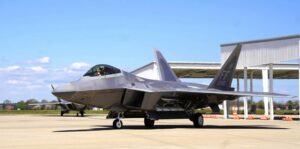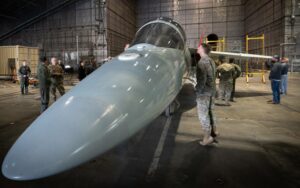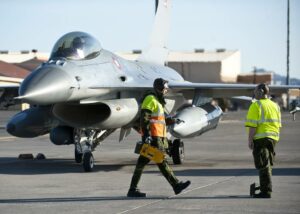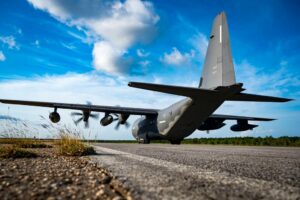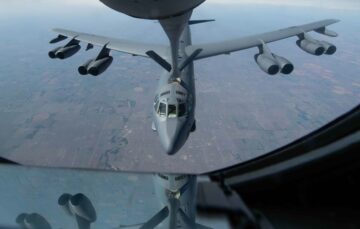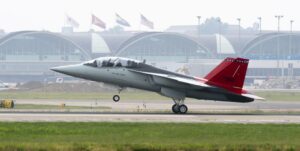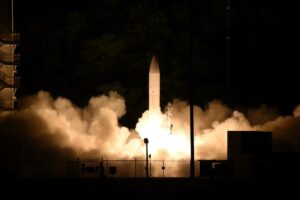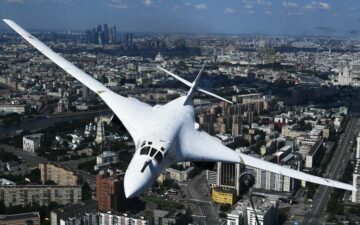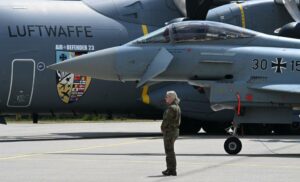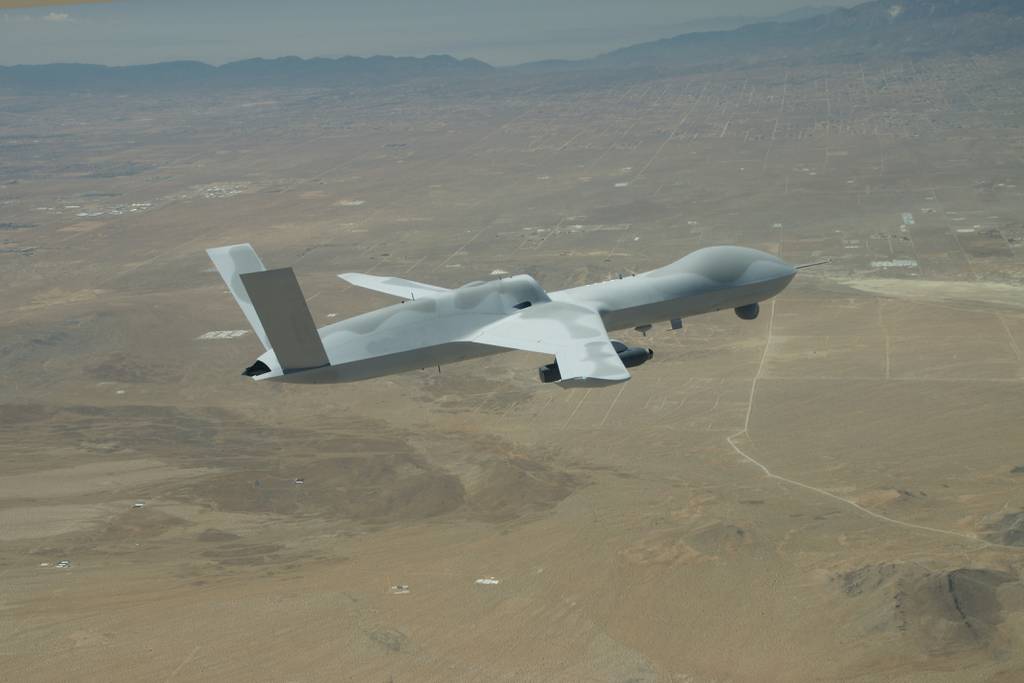
General Atomics Aeronautical Systems said it successfully released a new air-launched effects platform made with additive manufacturing from the internal weapons bay of an MQ-20 Avenger unmanned system.
The company partnered with Divergent Technologies, Inc. to design and build the Advanced Air-Launched Effects vehicle, or A2LE, using Divergent’s Adaptive Production System (DAPS) “to support rapid, low-cost manufacturing of the demonstration vehicle,” it said in a statement.
The Nov. 28 demonstration at Dugway Proving Ground, Utah, showed additive manufacturing, also known as 3-D printing, early in the design process can create efficiencies, the company said. It’s a key step in validating AM process and material properties for incorporation in future systems to be employed by both manned and unmanned platforms.
The flight was “a crucial first step in demonstrating GA-ASI’s ability to rapidly develop, manufacture, and test a Small Unmanned Aircraft System (SUAS) in a controlled, low-risk approach,” Mike Atwood, company vice president of advanced programs, said in the statement. “A2LE demonstrates the coupling of GA-ASI’s pedigreed aircraft design capabilities with Divergent’s DAPS, paving the way for continued maturation of affordable, modular SUAS platforms that can be tailored to meet warfighter needs at a fraction of the cost and lead time of currently fielded systems.”
The company is planning a network of A2LEs providing a “persistent, expansive grid” for surveillance, attack, enemy air defense suppression or communication pathways, according to the statement, while enhancing current and future manned and unmanned platforms with increased capability.
The U.S. Army has been extensively evaluating launched effects for roughly five years and is considering several size classes of launched effects. It’s evaluating an initial small, launched-effects prototype – a collaboration between Anduril Industries, RTX’s Collins Aerospace and Aurora Flight Sciences – as it experiment swith requirements and capabilities for a future program.
The service plans to launch these small, uncrewed aircraft not only from air platforms, but from launchers on the ground or off vehicles. It has demonstrated the capabilities several times, including at the service’s first Edge exercise in 2021, which experiments with technology to enhance operations in the aerial tier.
General Atomics demonstrated another ALE — the Eaglet — that the company deployed from a Gray Eagle UAS a year ago.
The Eaglet would fit in the large class, the company said, which translates to having the ability to carry a wide variety of more powerful sensors and payloads. The Gray Eagle would still be able to carry it for thousands of kilometers before launching it. A2LE is considered to fit in the small category.
“General Atomics has been approaching the future of uninhabited aerial vehicles and systems from a ‘family of systems’ approach,” said C. Mark Brinkley, a spokesman. “Whether air launched or ground launched, recoverable or expendable, we see these aircraft as offering different options configured for different missions.”
The company is working on several launched effects offerings in addition to Eaglet and A2LE like Sparrowhawk and LongShot, Brinkley added.
“All of these are similar and all of them are different, but the main theme here is affordable mass at scale, attacking a variety of problems in a variety of ways,” he said.
“It wouldn’t be fair to compare these aircraft head-to-head at this point, because they’re all being driven by different requirements and intended uses,” Brinkley noted, “but each of these programs are absolutely leveraging best practices and lessons learned from one program to the next to help us iterate and innovate very quickly.”
Jen Judson is an award-winning journalist covering land warfare for Defense News. She has also worked for Politico and Inside Defense. She holds a Master of Science degree in journalism from Boston University and a Bachelor of Arts degree from Kenyon College.
- SEO Powered Content & PR Distribution. Get Amplified Today.
- PlatoData.Network Vertical Generative Ai. Empower Yourself. Access Here.
- PlatoAiStream. Web3 Intelligence. Knowledge Amplified. Access Here.
- PlatoESG. Carbon, CleanTech, Energy, Environment, Solar, Waste Management. Access Here.
- PlatoHealth. Biotech and Clinical Trials Intelligence. Access Here.
- Source: https://www.defensenews.com/battlefield-tech/2024/02/01/general-atomics-demos-3-d-printed-air-launched-effects-vehicle/
- :has
- :is
- :not
- 2021
- 28
- 70
- 8
- a
- ability
- Able
- absolutely
- According
- adaptive
- added
- addition
- additive
- additive manufacturing
- advanced
- Aerospace
- affordable
- ago
- AIR
- aircraft
- All
- also
- am
- an
- and
- Another
- approach
- approaching
- ARE
- Army
- Arts
- AS
- At
- attack
- Attacking
- Aurora
- award-winning
- Bay
- BE
- because
- been
- before
- being
- BEST
- best practices
- between
- boston
- Boston University
- both
- build
- but
- by
- CAN
- capabilities
- capability
- carry
- Category
- class
- classes
- collaboration
- College
- Collins
- collins aerospace
- Communication
- company
- compare
- configured
- considered
- considering
- continued
- controlled
- Cost
- covering
- create
- crucial
- Current
- Currently
- Defense
- Degree
- demonstrated
- demonstrates
- demonstrating
- Demos
- deployed
- Design
- design process
- develop
- different
- driven
- each
- eagle
- Early
- effects
- efficiencies
- employed
- enhance
- enhancing
- evaluating
- Exercise
- expansive
- experiment
- experiments
- extensively
- fair
- First
- fit
- five
- flight
- For
- fraction
- from
- future
- General
- gray
- Ground
- having
- he
- help
- here
- holds
- HTTPS
- images
- in
- Inc.
- Including
- increased
- industries
- initial
- innovate
- inside
- intended
- internal
- IT
- journalism
- journalist
- jpg
- Key
- known
- Land
- large
- launch
- launched
- launching
- lead
- learned
- Lessons
- Lessons Learned
- leveraging
- like
- low-cost
- low-risk
- made
- Main
- manufacturing
- mark
- Mass
- master
- material
- Meet
- mike
- missions
- modular
- more
- needs
- New
- news
- next
- noted
- nov
- of
- off
- offering
- Offerings
- on
- ONE
- only
- Operations
- Options
- or
- partnered
- pathways
- Paving
- plans
- platform
- Platforms
- plato
- Plato Data Intelligence
- PlatoData
- Point
- powerful
- practices
- president
- printing
- problems
- process
- Production
- Program
- Programs
- properties
- prototype
- providing
- proving
- quickly
- rapid
- rapidly
- recoverable
- released
- Requirements
- roughly
- s
- Said
- Scale
- Science
- SCIENCES
- see
- sensors
- service
- several
- she
- showed
- similar
- Size
- small
- Statement
- Step
- Still
- Successfully
- support
- suppression
- surveillance
- system
- Systems
- tailored
- Technologies
- Technology
- test
- that
- The
- The Future
- Them
- theme
- These
- this
- thousands
- tier
- time
- times
- to
- u.s.
- university
- us
- uses
- using
- utah
- validating
- variety
- vehicle
- Vehicles
- very
- vice
- Vice President
- was
- Way..
- ways
- we
- Weapons
- which
- while
- wide
- with
- worked
- working
- would
- year
- years
- zephyrnet

